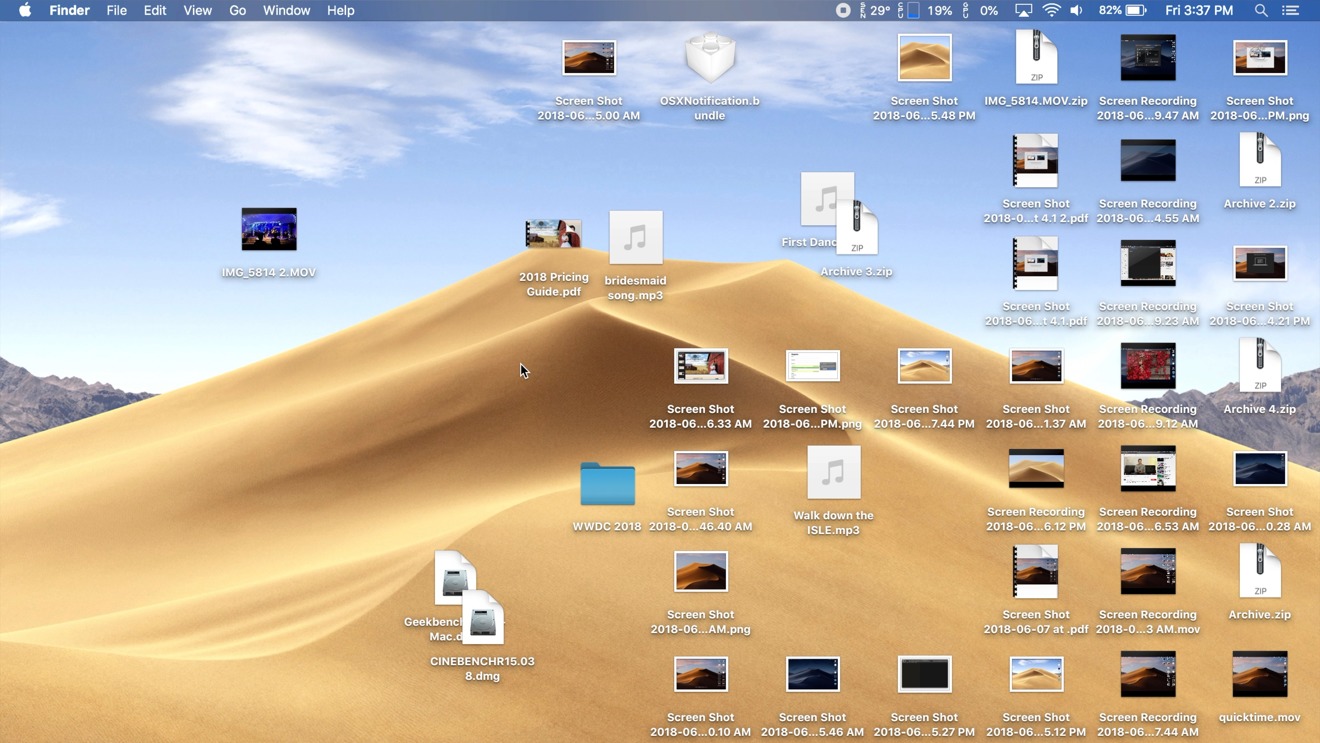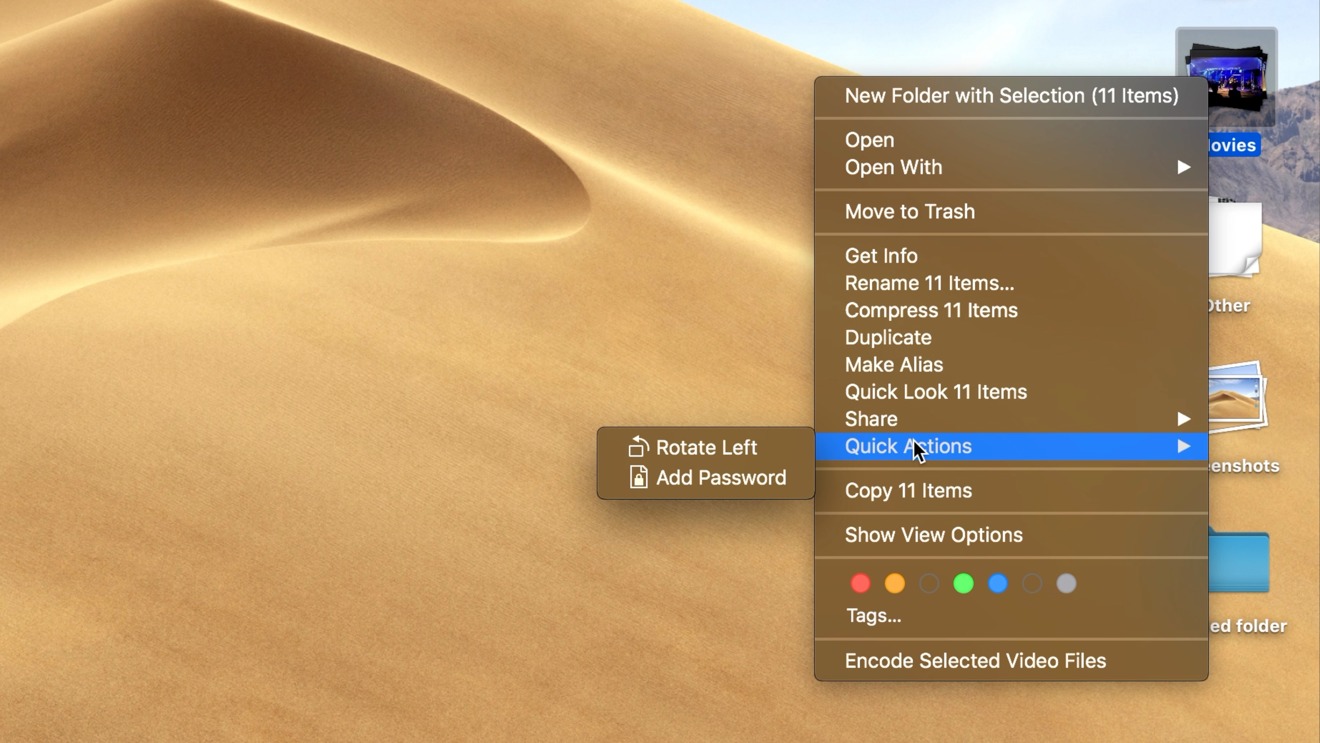Apple is set to introduce a slew of new features to Mac when its next-generation macOS Mojave operating system sees release later this year. One of our favorite user interface tweaks is Stacks, a brand new way to organize files on your desktop.
An average user's desktop might be cluttered with files and folders collected the years and arranged in no particular order. Apple has set about to remedy this organizational nightmare with Stacks, a new Mac feature that automates file and folder collation in macOS 10.14 Mojave.
Clicking on Stacks in the View menu option instantly arranges a user's files into separate stacks. By default, the contents of each stack is organized by type, for example PDF Documents, Music, Movies and Screenshots. Everything else, including disk image and zip files, goes into a stack named Other. Folders, on the other hand, are kept separate and automatically sorted below created stacks.
When a new file is introduced onto the desktop, it is automatically tossed into the corresponding stack, unless it's the only one of its kind. For example, we added a JPG image and it went below the stacks because there were no other pictures on our desktop. If we add another one, a new Images stack is created and both image files go inside of it.
This works the same way for pretty much all file types, except for folders. Clicking on a stack expands it to reveal the files inside, which are directly accessible from the desktop. When you find the file you're looking for, you can easily drag and drop it anywhere in the OS, like an email message.
All of the stacks and folders that sit below an actively open stack are moved to separate columns so they don't get mixed up. You can even open all stacks at the same time.
Right clicking on the desktop brings up options for arranging Stacks groupings. For example, selecting Date Created arranges stacks by top, with the most recent files sitting in the top-most stack. Grouping by Date Last Opened is also useful for easily accessing all of the files a user recently worked on. Stacks can also be configured by macOS tags.
Mojave lets users apply additional filters to each stack. So if we sort a stack by date last opened, the most recently opened file will show up at the top of the list.
Right click on a stack to access to a list of actions, including new folder creation, sharing, copying or performing a set of Mojave's new Quick Actions.
 AppleInsider Staff
AppleInsider Staff










-m.jpg)






 Charles Martin
Charles Martin
 Christine McKee
Christine McKee
 Wesley Hilliard
Wesley Hilliard
 Malcolm Owen
Malcolm Owen
 Andrew Orr
Andrew Orr
 William Gallagher
William Gallagher
 Sponsored Content
Sponsored Content








39 Comments
Really looking forward to this feature, it’s little details like this I love. Good stuff.
When I see people's desktops with a seemingly random spew of files I tend to think that these people also have many months worth of cheese encrusted fast food wrappers crumpled up on the seats and floor of their cars. Kind of like "Hoarders: Mac Desktop Edition."
I don't happen to be a desktop file hoarder but I do see the value in auto-organizing files using contextual clues and/or facets. Great idea. My perception though is that the Desktop metaphor is associated with a single, typically local machine while the greater potential for disorganization is with files stored in iCloud where they can be accessed from multiple desktops from a larger and more heterogeneous collection of devices. Yeah yeah, I know that you can mirror your Mac's Desktop folder to iCloud but that has always seemed like a clash of metaphors.
In summary, Stacks looks like a good feature for desktop file hoarders (who should clean up their Desktop anyway ;-) ) but it would be much more useful for addressing content management for iCloud and shared storage systems where the size, scope, and negative productivity impact of disorganization and disarray are potentially much worse. Having the scope of this feature bound to one machine's Desktop is okay for now but ultimately way too limited.
How will stacks affect memory usage. I have been told not to keep a lot of files on the desktop because it is a memory hog.